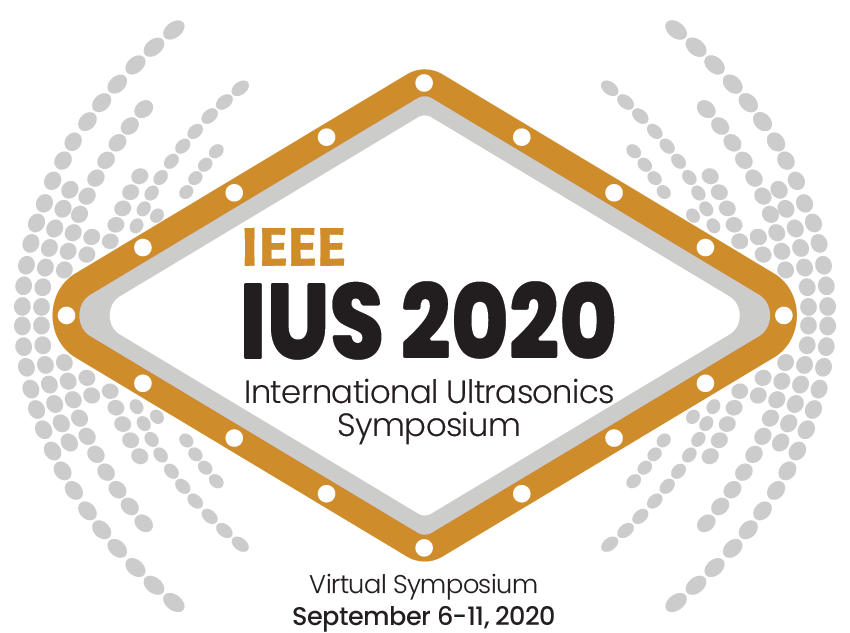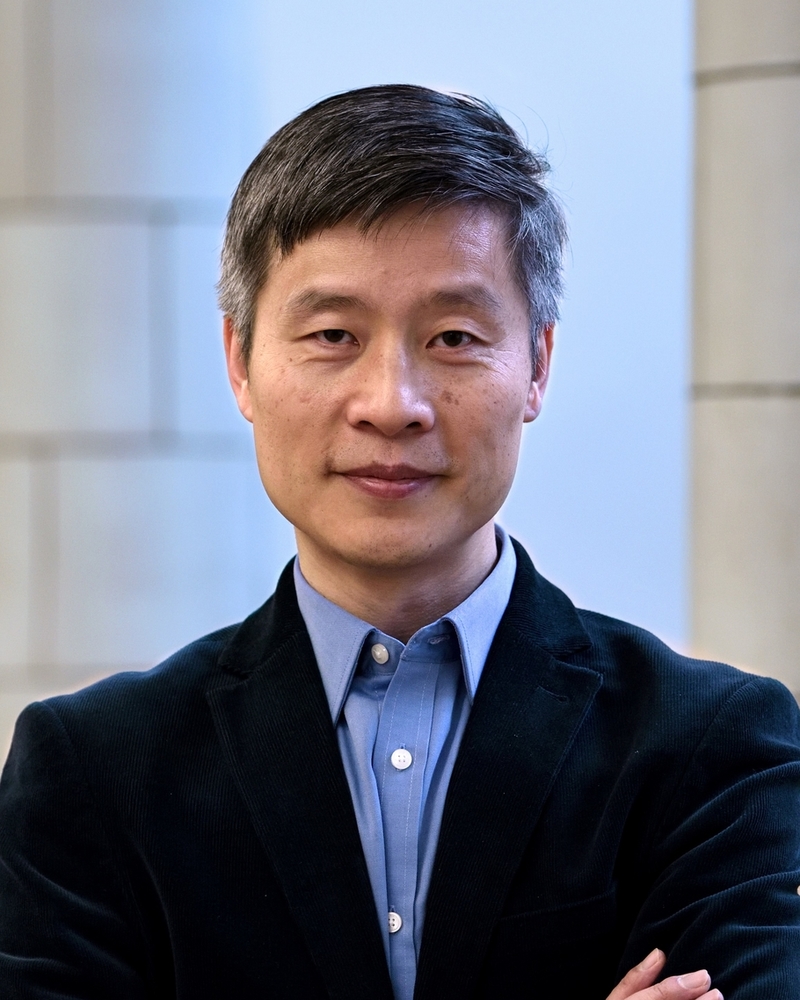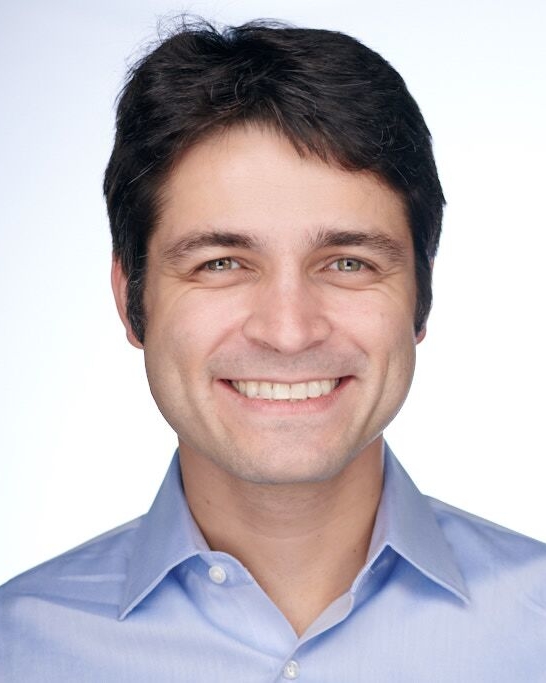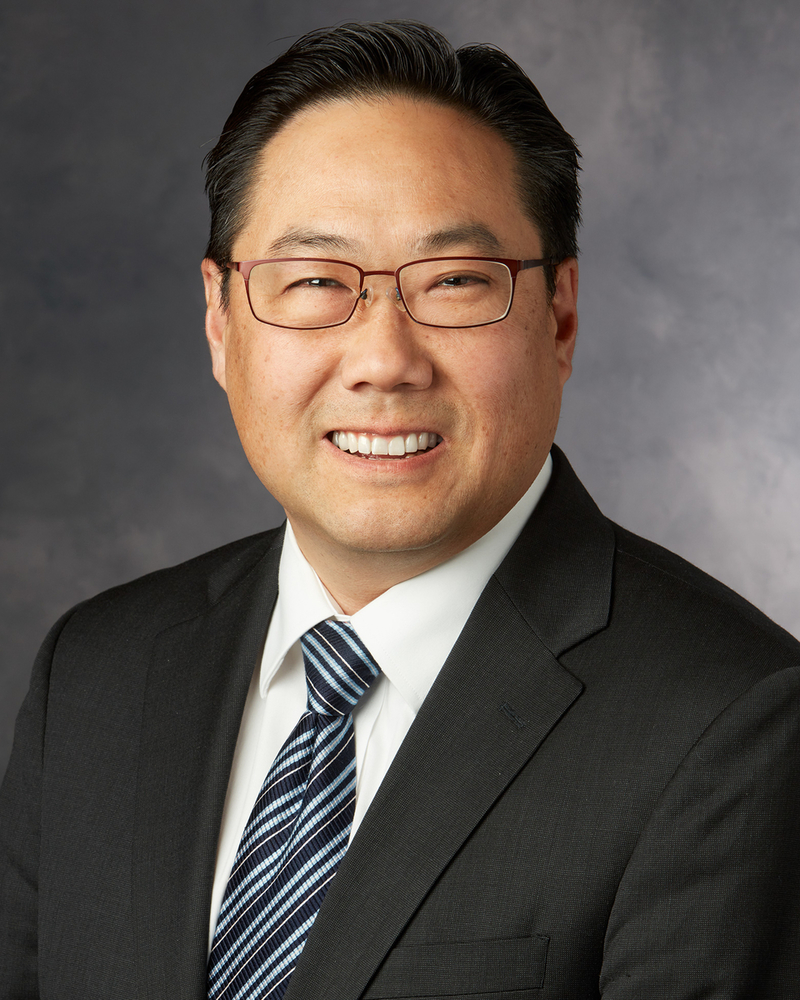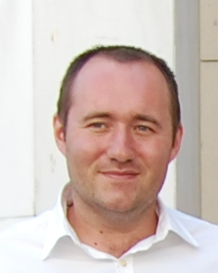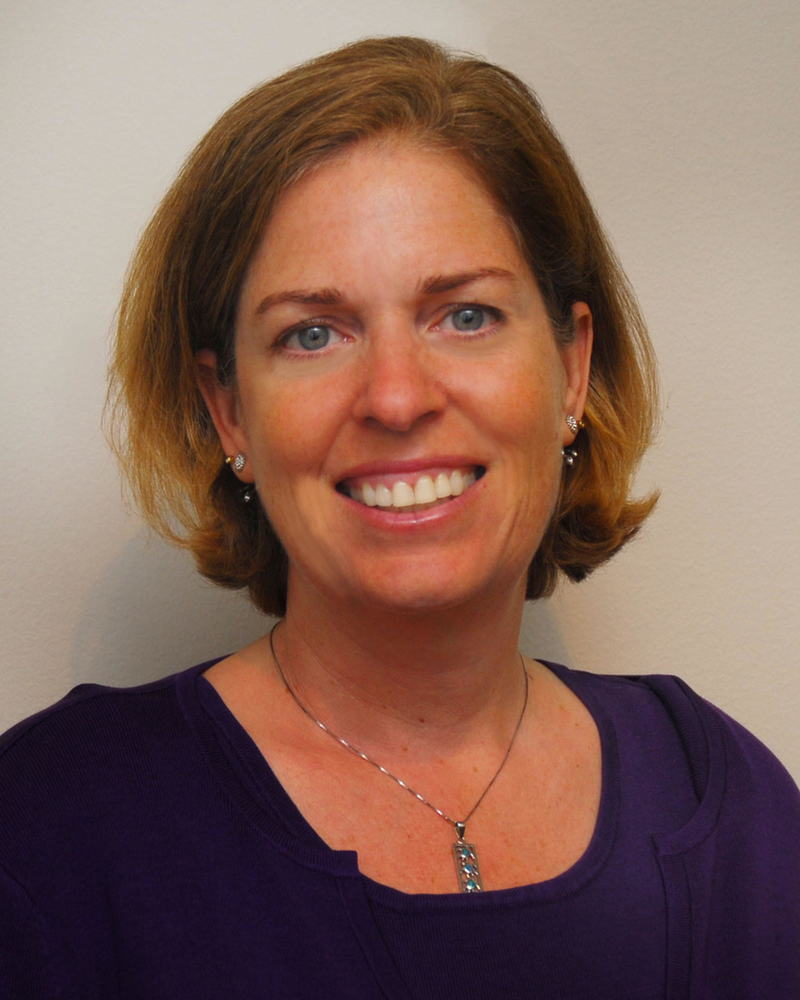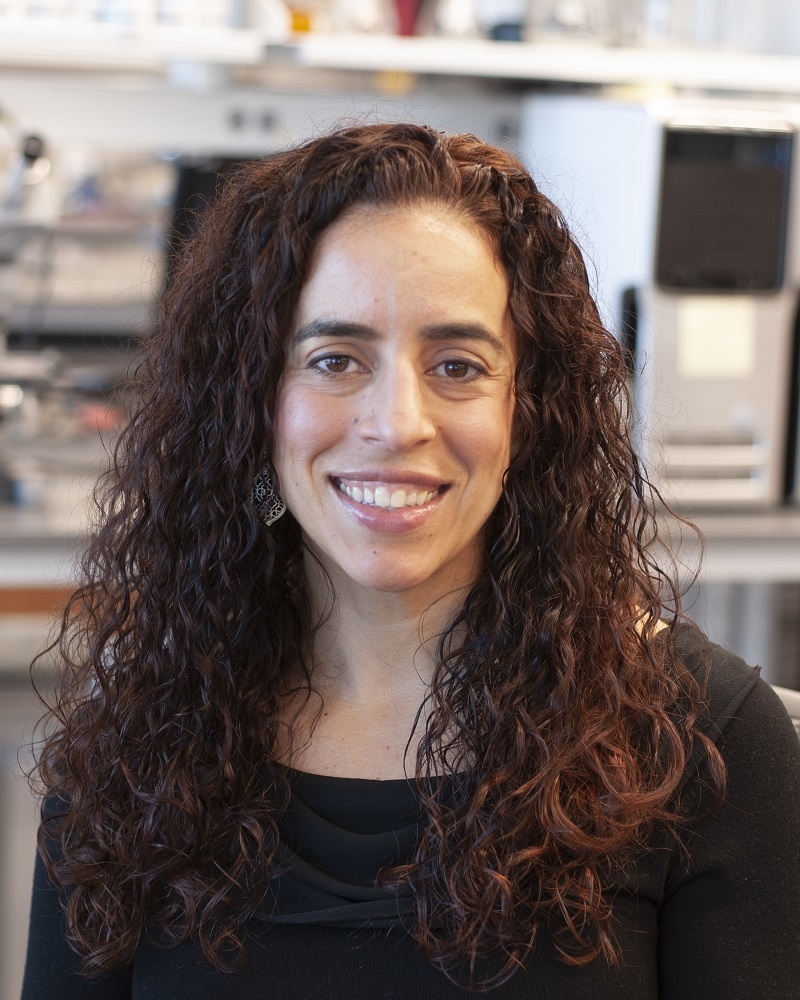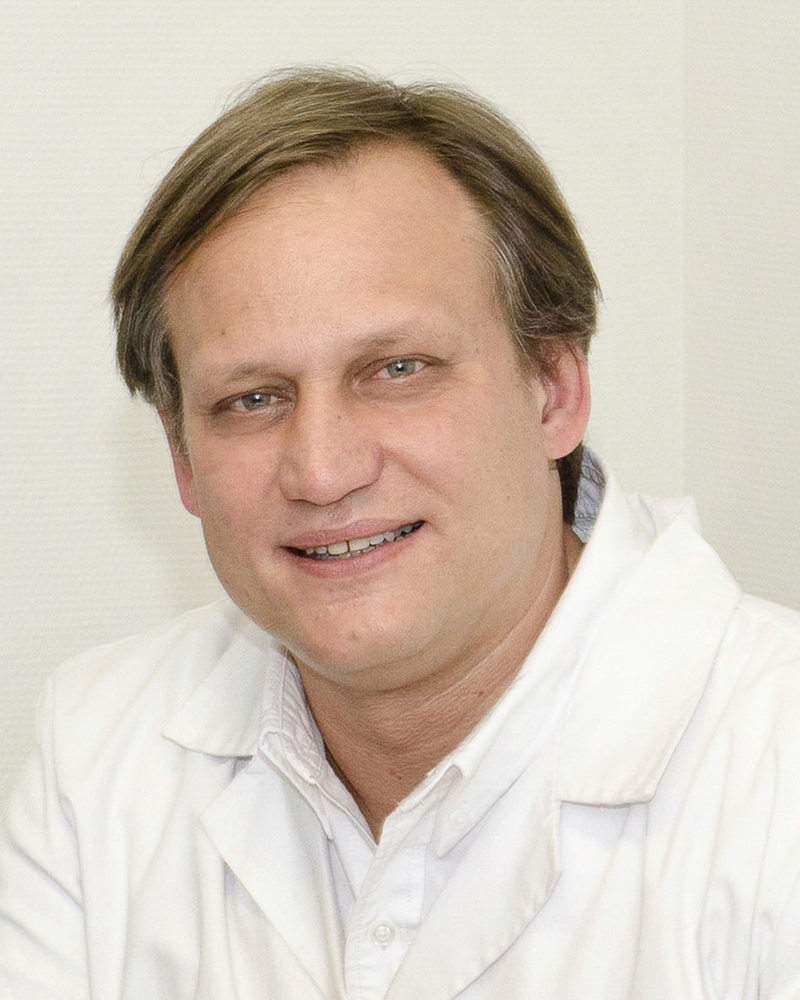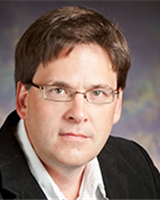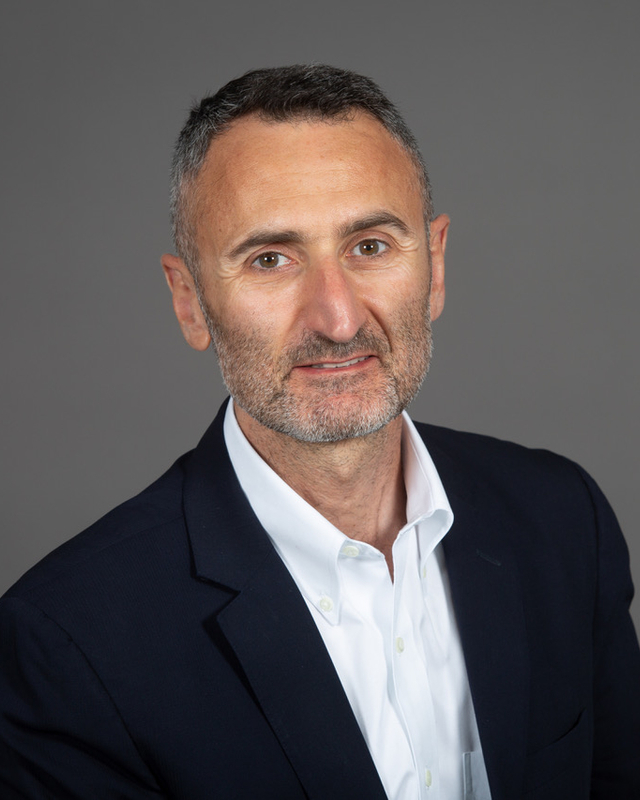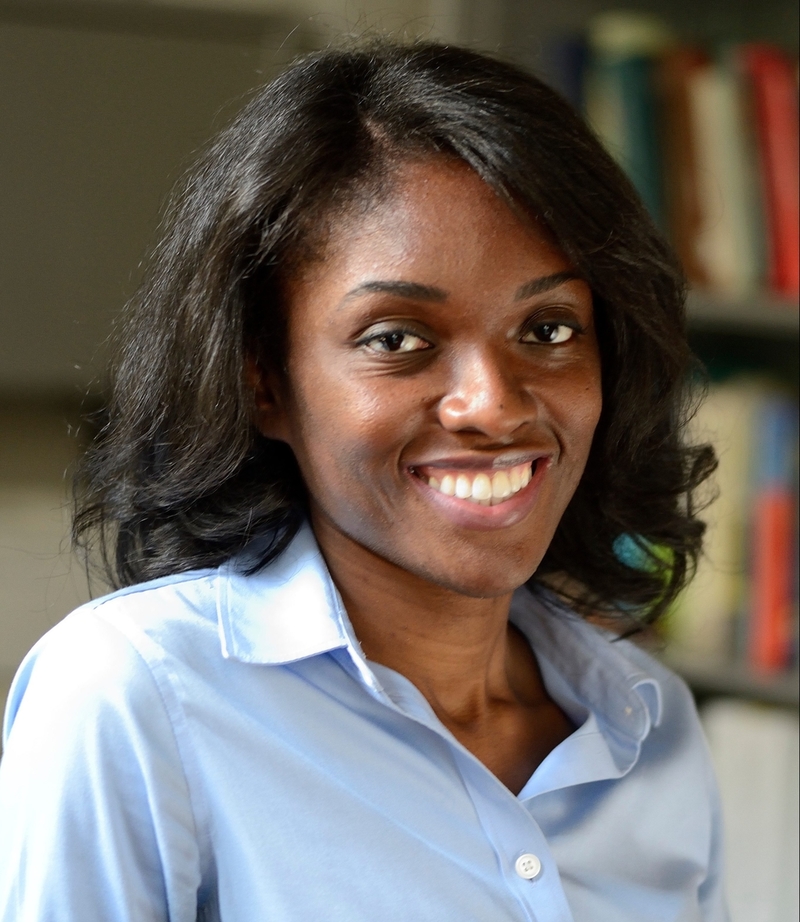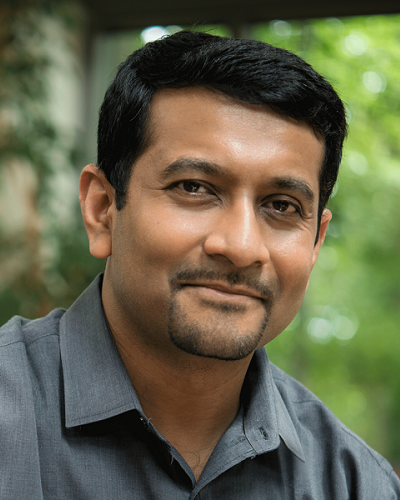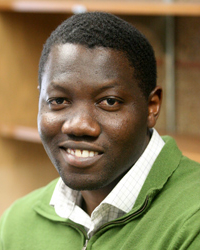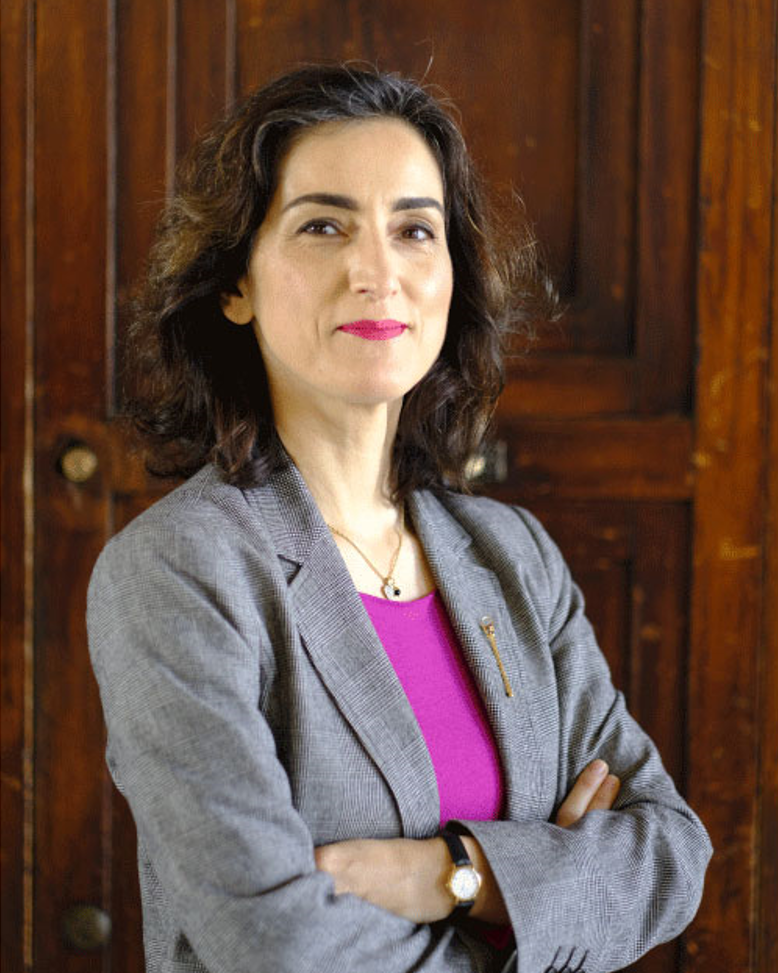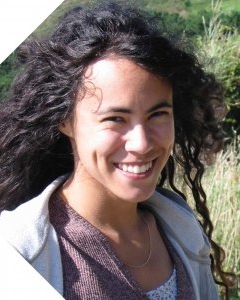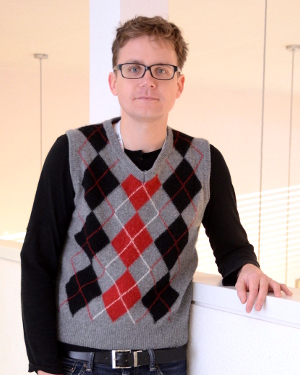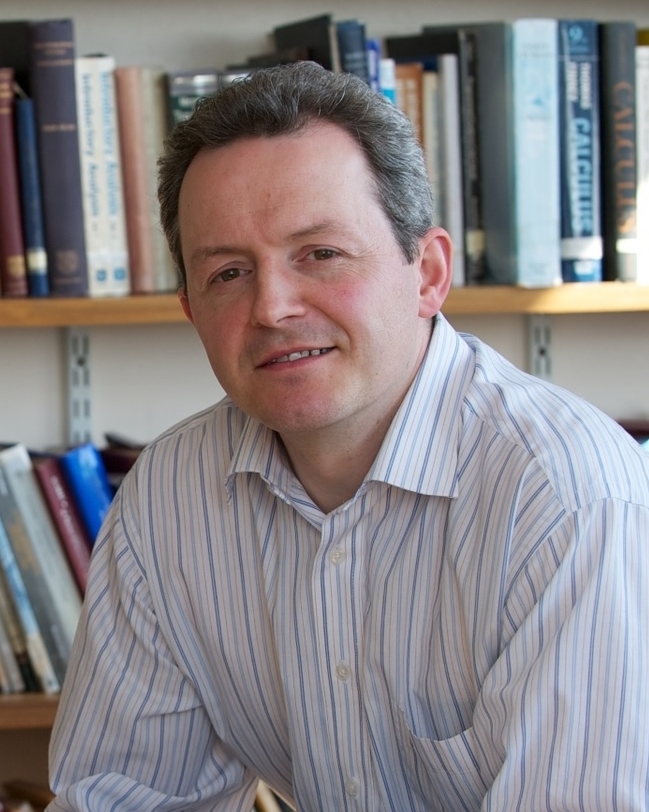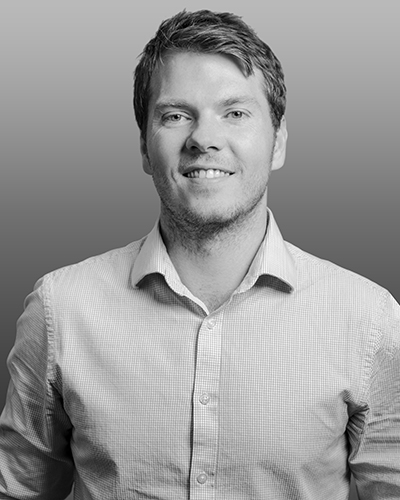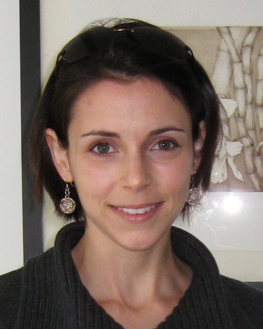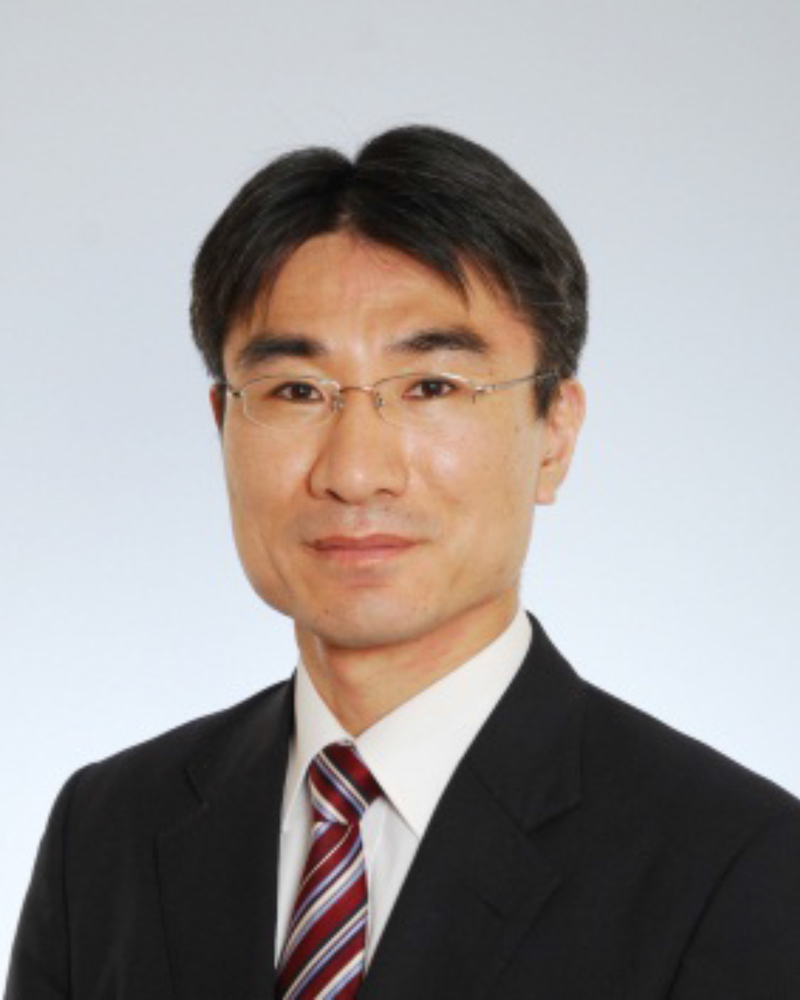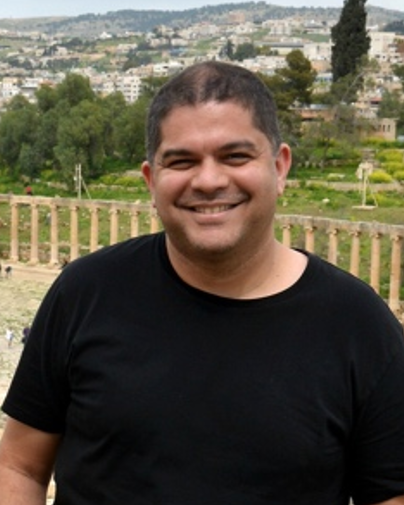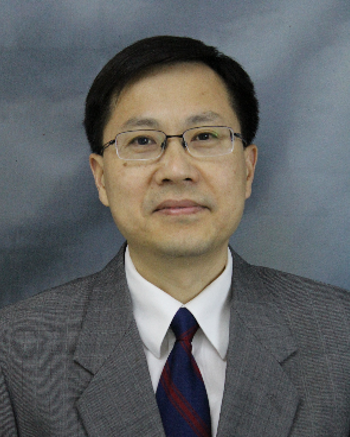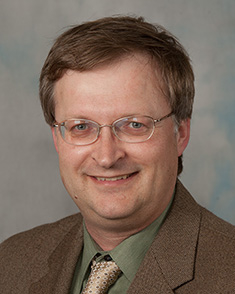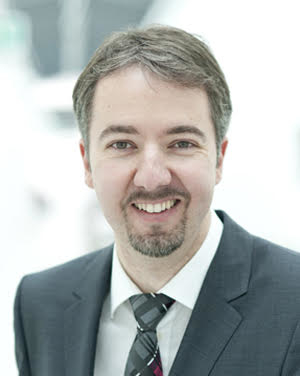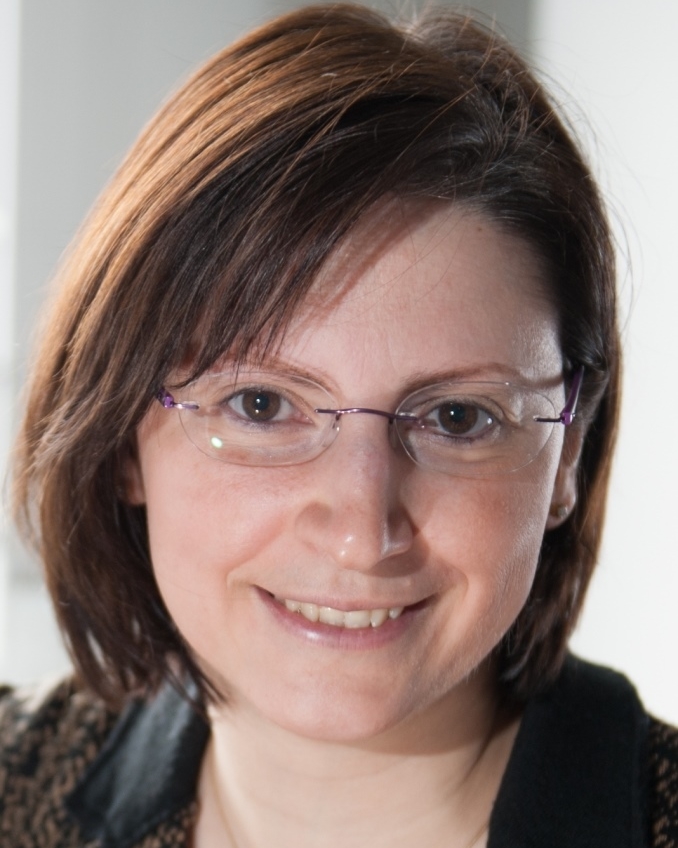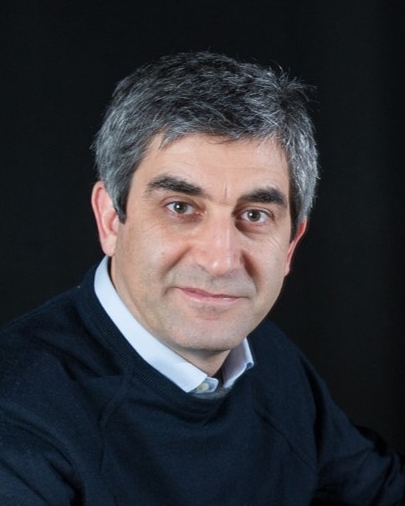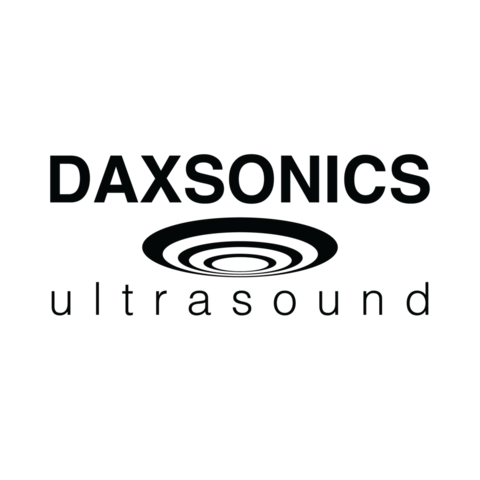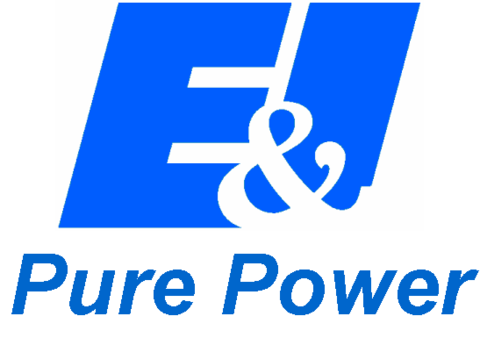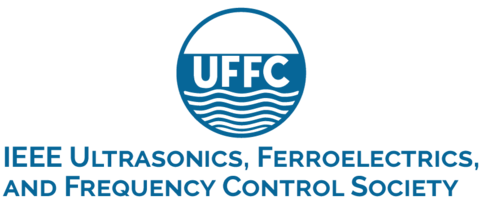Group 1: Medical Ultrasonics
Abstract
There has been an inherent compromise between the spatial resolution and penetration depth in ultrasound imaging. Optical super-resolution, through e.g. photo-activated localization microscopy (PALM), has revolutionized the field of fluorescence microscopy by breaking the diffraction limit of spatial resolution. However, a key disadvantage of such optical techniques is that it cannot penetrate deep in tissue and is not suitable for clinical imaging. Ultrasound super-resolution imaging, particularly through localizing spatially isolated individual microbubbles, is shown to be able to break the wave diffraction limit and offers resolution of potentially down to the level of several microns at centimeter depth, offering great promises for a wide range of clinical applications.
A number of groups across the world have demonstrated ultrasound super-resolution using microbubble contrast agents, and produced compelling super-resolution images of tissue microvasculature in vivo in various organs. In the talk I would first introduce microbubble based super-resolution ultrasound and its recent progress, followed by the challenges in its in vivo applications including the tradeoff between temporal resolution and image resolution and signal to noise ratio. Due to the requirement of sparse distribution of the contrast agents to allow for individual agent localisation, significant data acquisition time typically at the level of multiple seconds to tens of seconds is required to build up a single super-resolution image. I will then introduce a new approach, Acoustic Wave Sparse Activation and Localisation Microscopy (AWSALM), which mimics the optical super-resolution techniques such as PALM and STORM, by using acoustic switching of phase change nanodroplets for fast super-resolution imaging. In this method high concentration of the phase change agents can be used, which are initially silent to ultrasound. These agents can then be activated by ultrasound to become microbubbles, and the ultrasound parameters can be turned such that only a small sub-group of these agents are activated at one time to enable sparse localisation. As such agents can be switched on and off by ultrasound at its pulse repetition frequency, a super-resolution map can be generated much faster than the existing microbubble based approach. I will present our efforts in the development and initial evaluation of the technique in vitro and in vivo, and discuss future directions.
Abstract
The study of biological function in intact organisms and the development of targeted cellular therapeutics necessitate methods to image and control cellular function in vivo. Technologies such as optogenetics serve this purpose in small, translucent specimens, but are limited by the poor penetration of light into deeper tissues. In contrast, non-invasive techniques such as ultrasound – while based on energy forms that penetrate tissue effectively – are not as effectively coupled to cellular function. Our work attempts to bridge this gap by engineering biomolecules with the appropriate physical properties to interact with sound waves, and to enhance the transport of engineered biomolecules into tissues such as the brain. In this talk, I will describe two classes of biomolecular acoustic actuators. One is based on genetically encodable air-filled protein nanostructures known as gas vesicles, which can be converted to free bubbles using low frequency ultrasound. This enables gas vesicles, and cells engineered to express them, to serve as targeted seeds for inertial cavitation, thereby combining molecular and cellular logic with strong mechanical action. The second class of actuators is based on temperature-dependent transcriptional regulators, which provide switch-like control of gene expression in response to small changes in temperature delivered by ultrasound. This allows us to use focused ultrasound to remote-control the function of engineered cells in vivo. In addition, I will describe our efforts to use ultrasound in combination with viral vectors and engineered receptors to provide spatially and cell-type specific non-invasive control over neural activity.
Jean Francois Aubry
Transducer design for transcranial ultrasound therapy: challenges and recent breakthroughs
Abstract
Transcranial ultrasonic brain therapy at frequencies higher than 500kHz requires adaptive focusing to compensate for the aberrations induced by the skull bone. This can be achieved by using multi-element arrays driven by a dedicated electronics. A growing number of elements was used to improve the focusing: 64 elements in 2000 [1], 300 in 2003 [2], 1024 in 2013 [3], and with more to come. We will present some of the salient results obtained pre-clinically and clinically with such multi-element transcranial devices. Nevertheless, we will show that comparable transcranial focusing can be achieved with a novel approach in rupture with the current trend. It consists in a single- element covered with a 3D acoustic lens of variable and controlled thickness. Similar lenses have been introduced in the past to perform single or multiple focusing patterns in homogenous propagating media [4] but recent 3d printing and milling capabilities make tailor-made 3D lenses a feasible option for transcranial adaptive focusing[5] and 3D beam shaping, allowing to create holograms in the brain. Such lenses can furthermore allow beam steering around the target by taking advantage of the transkull isoplanatic angle.
[1] Clement G et al, A hemisphere array for non-invasive ultrasound brain therapy and surgery. Phys Med Biol, 2000
[2] Pernot M et al, High power transcranial beam steering for ultrasonic brain therapy. Phys Med Biol, 2003
[3] Lipsman N et al, MR-guided focused ultrasound thalamotomy for essential tremor: a proof-of-concept study. The Lancet Neurology, 2013
[4] Fjield T et al, Low-profile lenses for ultrasound surgery. Phys Med Biol, 1999
[5] Maimbourg G et al, 3D-printed adaptive acoustic lens as a disruptive technology for transcranial ultrasound therapy using single-element transducers. Phys Med Biol, 2018
Joo Ha Hwang
Recent advances in the application of focused ultrasound for the treatment of pancreatic cancer
Abstract
Focused ultrasound (FUS) is a novel non-invasive modality for treatment of various solid tumors including uterine fibroids, prostate cancer, hepatic, renal, breast and pancreatic tumors. FUS therapy utilizes mechanical energy delivered by ultrasound waves that are focused inside the body to induce thermal and/or mechanical effects in tissue. Multiple preclinical and non-randomized clinical trials have been performed to evaluate the safety and efficacy of FUS for the treatment of pancreatic tumors. Initially, ablative therapy with FUS demonstrated substantial tumor-related pain reduction after FUS treatment with minimal adverse effects. More recent studies have focused on the use of FUS to enhance drug delivery to pancreatic tumors, demonstrating extremely promising results. Drug delivery can be enhanced by FUS by both thermal and mechanical mechanisms. The most recent research that is demonstrating promising results in pre-clinical models is the application of FUS in stimulating the immune response and playing a role in immune therapy for the treatment of pancreatic cancer.
Adrian Basarab
Inverse problems in computational ultrasound imaging and related applications: from model-based to machine learning approaches
Abstract
Computational imaging methods are extensively used nowadays to form, process and analyze ultrasound images. The first part of this talk will resume some of the existing model-based approaches, through different applications in medical ultrasound such as compressed sensing, beamforming, image deconvolution, multimodal image fusion and tissue motion estimation. Model-based algorithms are commonly cast as inverse problems requiring the establishment of a forward model and an inversion process combining appropriate regularizations and scalable optimization algorithms. The forward models link the observed noisy data to the image to be reconstructed. Mathematically, if vector y stands for the measured data and x for the image to be reconstructed, the forward model can be expressed as y=T(x), where T is an operator modelling the physics of the system under consideration and the statistical nature of the noise. Inverting such models is a typical ill-posed inverse problem that needs regularization to stabilize the solution. In this talk, the main focus will be on sparse regularization and on statistical assumptions on x promoting its sparsity. The second part of the talk will highlight some limitations of the model-based algorithms and the interest of using machine learning in such problems. Indeed, despite their interest, tractable models are not always easy to establish in practical applications where the physics of data acquisition is complex and the images to reconstruct are difficult to approach by reliable models. To illustrate this statement, we will focus on a few applications where machine learning offers a solution by learning models for approaching the acquisition model and/or for finding appropriate regularizers.
Abstract
Drug-loaded perfluorocarbon nanoemulsions have been utilized for targeted drug release, mostly in the context of cancer therapies, and usually relying upon tissue uptake of the nanoparticles prior to drug release. To apply this system for brain drug delivery, we have stabilized these nanoemulsions and have shown that they may be effectively uncaged while circulating in the intravascular blood volume, with the drug having its effect only when and where focused ultrasound has been applied. We have shown that this system works for a wide variety of drugs. We are now working towards clinical translation of two particular instances of this technology, one with the nanoemulsion loaded with the anesthetic propofol, and a second with the nanoemulsion loaded with the psychedelic, antidepressant, and anesthetic ketamine.
More information provided here.
Caterina M. Gallippi
Viscoelastic Response (ViSR) Ultrasound: Methods, Validation, and In Vivo Clinical Applications of a New Approach to Viscoelastic Property Assessment
Abstract
Viscoelastic Response (VisR) ultrasound is a new, noninvasive method for interrogating the elastic and viscous properties of tissue by observing, in the region of excitation, tissue displacement in response to successive acoustic radiation force impulses. Unlike Acoustic Radiation Force Impulse (ARFI) methods, VisR evaluates both elastic and viscous properties. Unlike methods that monitor shear wave propagation, VisR avoids the potentially confounding effects of wave reflection and attenuation and spatial averaging. Recent VisR technology advancements now enable, via machine learning approaches, quantitative evaluation of elastic and viscous moduli as well as estimation of mechanical anisotropy and texture. In this talk, the methods of VisR data acquisition and processing will be described, and VisR outcome measures will be validated against known standards. Further, the diagnostic relevance of VisR outcome measures will be demonstrated. In application to renal disease, it will be shown that VisR differentiates injury-induced inflammation and fibrosis in vivo in a pig model and, in human translation, interrogates renal allograft status over time. In application to musculoskeletal disease, it will be shown that VisR differentiates dystrophic from control muscles in boys with Duchenne muscular dystrophy versus age-matched control boys. In application to breast cancer, it will be shown that VisR distinguishes malignant from benign breast masses. Finally, with numerous and varied new clinical applications on the horizon, future directions for VisR technology development will be discussed.
Javier Bermejo
The clinical assessment of intracardiac flow. New tools provide new insight
Abstract
In the few years, important breakthroughs have taken place in ultrasound technologies aimed to characterizing blood flow. Although still with some limitations, high-resolution color-Doppler and flow scatter imaging allow obtaining accurate measurements of intracardiac flow velocities in dimensions and resolutions previously impossible to obtain from conventional Doppler methods. Appropriate postprocessing algorithms have extended the physiological and diagnostic value of these techniques to a completely new level.
Complex metrics of intracardiac flow physical properties are now readily available in the clinical setting using bedside examinations and conventional ultrasound scanners. Intracardiac vortices can now be visualized and quantitatively analyzed, and their physiological and pathological impact is only beginning to be understood. Blood transport inside the heart is a very complex phenomenon that impacts aspects such as cardiac development and pump efficiency. Quantifying blood mixing, stasis and shear opens a whole new world of cardioembolic risk assessment. Consequently, from the analysis of intracardiac flow useful metrics of cardiovascular physiology have been validated and explored in clinical terms.
The present lecture shall focus on the clinical and research applications of these achievements. The new information provided by ultrasound-based measurements of cardiac flows has opened a whole world of novel physiological information. Metrics of intrinsic global systolic and diastolic function can be derived from color-Doppler-derived measurements of intraventricular pressure gradients. Scales of global chamber efficiency can be approximated by the analysis of flow transport topology. Indices of cardioembolic risk can be inferred from the analysis of global and regional residence time of blood inside the heart. Pilot studies have demonstrated a huge potential of these modalities to quantify the risk of cardioembolic events in a number of cardiac conditions.
This lecture shall focus on the clinical implications of these novel methods and their consequences, emphasizing clinical evidence and ongoing clinical trials. The major purpose is to discuss the medical perspectives in terms of diagnostic and prognostic information than can be inferred from the quantitative analysis of ultrasound-derived flow measurements. The current state-of-the-art of these tools in terms of clinical efficacy shall summarized in fields such as ischemic heart disease, atrial fibrillation, inherited cardiomyopathies, amongst others.
Michael L. Oelze
Overcoming challenges to quantitative ultrasound implementation in vivo
Abstract
Spectral-based quantitative ultrasound (QUS) techniques have been successfully used to enhance diagnostic ultrasound. In recent years these techniques have moved towards clinical implementation. Challenges remain in implementation of QUS techniques in vivo. Specific issues that remain include: accounting for losses from the transducer surface to tissue regions being interrogated, lack of models that accurately represent underlying tissue microstructure and the necessity of acquiring a separate external reference scan.
More information provided here.
Abstract
Photoacoustic imaging offers “x-ray vision” to see beyond tool tips and underneath tissue during surgical procedures, without requiring ionizing x-rays. Instead, optical fibers and acoustic receivers enable photoacoustic sensing of major structures – like blood vessels and nerves – that are otherwise hidden from view. Laser pulses illuminate regions of interest, causing an acoustic response that is detectable with ultrasound transducers. In this talk, I will highlight novel light delivery systems, new coherence-based beamforming theory, deep learning approaches, counterintuitive findings, and robotic integration methods introduced by the Photoacoustic & Ultrasonic Systems Engineering (PULSE) Lab to enable this exciting frontier known as photoacoustic-guided surgery.
Siddhartha Sikdar
Sonomyography: A New Application of Wearable Ultrasound in Rehabilitation Engineering
Abstract
Despite significant advances in the engineering of biomechatronic devices, such as multiarticulated prosthetic hands, their functional utility continues to be limited because of difficulties in the ability to sense the volitional intent of the human user. Traditionally, electromyography using surface electrodes has been the dominant method for sensing volitional intent from myoelectric signals. A major challenge with surface electromyography has been the difficulty in achieving intuitive and robust proportional control of multiple degrees of freedom. To address this problem, our group has been one of the pioneers for a new control method (sonomyographic control) that overcomes several limitations of surface electromyography. In sonomyography, muscle mechanical deformations are sensed using ultrasound, as compared to electrical activation, and therefore the resulting control signals can directly control the position of the end effector. Compared to myoelectric signals, which control end-effector velocity, sonomyographic control may be more congruent with the remaining proprioception within the residual limb. In addition, ultrasound imaging can non-invasively resolve individual muscles, including those deep inside the tissue, and detect dynamic activity within different functional compartments in real-time. This alignment between activation and proprioception, as well as the ability to distinguish small, but significant differences in deep muscle tissue activations (e.g., different grasp patterns) may collectively provide more intuitive control signals for prosthetic devices. In this talk, I will describe results from our current studies with amputees and future directions. I will describe our work on developing miniaturized low-power ultrasound instrumentation for wearable systems. I will also describe extensions of this research to exoskeletons and other applications in rehabilitation.
Group 2: Sensors, NDE & Industrial Applications
Oluwaseyi Balogun
Quantitative Characterization of Viscoelastic Properties of Biofilms and Soft Materials based on Optical Coherence Elastography
Abstract
Quantitative characterization of viscoelastic properties in biofilms and other soft materials are crucial to understanding the origin of their dynamic heterogeneous architecture, mechanical stability, and mechanical responses to external stimuli. The optical coherence elastography (OCE) technique recently emerged as a powerful nondestructive characterization tool that relies on low coherence interferometry for measurement of elastic wave propagation in transparent media. In this lecture, I will present a frequency domain OCE approach that facilitates measurement of the dispersion relation of guided transverse waves in soft transparent materials. I will discuss the numerical modeling approach that we adopted to predict the dispersion relation of viscoelastic transverse wave modes in flat plates, curved plates, and semi-infinite substrates, subjected to different boundary conditions. The model provides a useful tool to study the sensitivity of the wave speed to various properties including, viscoelastic properties, hydrostatic pressure, thickness, curvature, and density, for inverse analysis of mechanical properties, and to select experimental parameters for optimal sensitivity. I will present experimental results and numerical calculations that demonstrate how my research group has applied the combination of the modeling approach and the frequency domain OCE measurements to characterize the viscoelastic properties of various hydrogels and environmental biofilms, and the hydrostatic pressure-dependent mechanical properties of corneal tissue phantoms.
Annamaria Pau
Ultrasonic guided wave imaging of plates containing defects and inclusions
Abstract
This talk addresses the nondestructive testing of platelike structural components that are widely used in aerospace, marine, and civil structures. The objective is not only to detect and localize possible defects, but to actually reconstruct a picture of the plate in terms of weakened areas and material distribution, considering cases with multiple defects of different depths and/or inclusions of different materials. To do so, the minimum-variance distortionless response beamforming processor is applied, using a new set of weights, proposed in [1-2], that improves the focus of the array by increasing the dynamic range and the spatial resolution of the image. These weights are based on the physics of the propagating Lamb modes, including the symmetric mode S0, the antisymmetric mode A0, and the shear horizontal mode SH0, taking advantage of their compounding too. The beamforming processor is further enriched with a scaling of the intensity of the reflection, also based on the physics of the scattered field [3], which enables to assign a grayscale intensity to the pixels, and to distinguish stiffer from weaker areas of the plate.
[1] F. Lanza Di Scalea, S. Sternini, and T. V. Nguyen, “Ultrasonic imaging in solids using wave mode beamforming,” IEEE Trans. Ultrason., Ferroelectr., Freq. Control, vol. 64, no. 3, pp. 602–616, 2017
[2] S. Sternini, A. Pau, F. Lanza di Scalea “Minimum variance imaging in plates using guided wave mode beamforming, IEEE Trans. Ultrason., Ferroelectr., Freq. Control, vol.66 no 12, pp.1906-1919, 2019
[3] A. Pau and D. V. Achillopoulou, “Interaction of shear and Rayleigh- 908 Lamb waves with notches and voids in plate waveguides,” Materials, 909 vol. 10, no. 7, 841, 2017.
Group 3: Physical Acoustics
Agnès Huynh
Acoustic attenuation in crystalline and amorphous solids in the sub-THz frequency range via ultrafast optical techniques
Abstract
Advances in the field of high-frequency phonons transduction using semiconductor superlattices give the opportunity to explore the difficult but important frequency range between 0.1 and 1 THz in semiconductors and amorphous materials. High frequency phonon lifetimes are actively studied nowadays in relation to thermal and thermoelectric transports in semiconductors. The knowledge of phonon-phonon interactions in bulk systems is generally inferred from the measurement of macroscopic data such as the thermal conductivity. We are today still lacking precise and detailed information on phonon mean free paths in very used materials such as silicon and gallium arsenide. I will present an experimental study of the attenuation in GaAs, where the dependence of the inverse mean free path has been accurately determined at these frequencies, as a function of the temperature from 4K to 60 - 80K.
We use also the advent of this reliable ultrafast optical technique to explore acoustic modes in glasses. Indeed, Brillouin scattering of light allows to measure velocity and absorption of sound up to frequencies around 100 GHz and coherent inelastic x-ray scattering is limited to frequencies larger than ~ 1 THz. Yet, a rather universal property of glasses is the existence of a large excess of modes, with a maximum density of states near 1 THz, forming the so-called boson peak. The acoustic modes should be strongly affected as their frequency nears the boson peak. The onset of this effect, which is expected to be dominant in the 0.5 to 1 THz range, is observed here for the first time in v-SiO2 as a function of temperature.
Sebastjan Glinsek
Piezoelectrics in Wearable Applications
Abstract
Piezoelectric materials are interesting for wearables due to their relatively low-cost, compactness and flexibility. By far the most spread wearable application is quartz watch, which uses temperature-stable oscillation of the single-crystal piezoelectric material to keep the exact timing. However, large number of wearable applications exploit direct piezoelectric effect to either scavenge the energy or monitor motion of the human body and its health.
Piezoelectric sensors for wearables have been developed to follow pulse wave signals, movements of muscles, respiration, etc. In recent years, the field observed increased efforts to develop electronic-skin- and fiber/fabric-based applications, focusing on preparation of flexible piezoelectric structures at low temperatures. Among large amount of studied materials the most promising are ZnO-based nanostructures, poly(vinylidene fluoride) (PVDF)-based polymers and Pb(Zr,Ti)O3 (PZT)-based nanostructures.
The need for self-powered health-monitor systems is the main driving force for development of wearable piezoelectric energy harvesters. Their development is not straightforward due to specifics of the human movement: low and irregular frequencies, large amplitudes and multi-axial motions. Nevertheless, a number of applications has been demonstrated, including shoe-integrated and wrist-worn eccentric rotor-based harvesters. Their development rely on the preparation of high-quality piezoelectric materials, among which the most performant are thin-films of PZT, Sc-doped AlN and PVDF-based polymers. In the presentation, we will make an overview of the state-of-the-art sensing and harvesting applications and we will benchmark different materials. The focus will be on their functional properties and possibility to prepare flexible structures at low temperatures.
In the last part, we will focus on two of our recent activities. The first are flexible PZT piezoelectric thin films grown directly on austenitic steel metal foils via chemical solution deposition. Their dielectric permittivity is five-times smaller (200) and their piezoelectric coefficient d33,f is comparable (~150 pm/V) to the to the films grown on standard platinized silicon substrates, making them particularly interesting for wearable harvesting.1
The second example are multilayer structures of poly(vinylidene fluoride trifluoroethylene) (P(VDF-TrFE)) printed on poly(ethylene 2,6-naphthalate) (PEN). These flexible structures, with the area of 2.4 cm2, can harvest as much as 1 mW at 33 Hz and are able to feed a microcontroller with wireless connection to a mobile phone.2
1S. S. Won, M. Kawahara, S. Glinsek, J. Lee, Y. Kim, C. K. Jeong, A. I. Kingon, S. H. Kim, Flexible vibrational energy harvesting devices using strain-engineered perovskite piezoelectric thin films. Nano Energy, 55, 182 (2019)
2N. Godard, L. Allirol, A. LAtour, S. Glinsek, M. Gérard, J. Polesel, F. Domnigues Dos Santos, E. Defay, One-milliwatt vibration energy harvester with printed polymer multilayers, under review.
Steven Cummer
Wavefront Control with Acoustic Metamaterials: Concepts and Applications
Abstract
Acoustic metamaterials use structure, rather than the intrinsic properties of materials, to manipulate and control sound waves in ways that are challenging or impossible with conventional materials. One of the main paradigms behind acoustic metamaterial design is wavefront control, in which known incident wavefronts are to be converted into desired reflected or transmitted wavefronts. In this way, incident acoustic energy can be arbitrarily steered, split, focused, or even given orbital angular momentum. Such wave manipulation can often be accomplished in a relatively thin acoustic metamaterial structure (also called a metasurface), making physical realization simpler. This presentation will describe some of our group’s recent research in the area of acoustic wavefront control. This will include a short summary of our metasurface research using phase-control elements and diffraction, followed by more recent work on so-called perfect metasurfaces, in which acoustic structures are designed to control the local surface impedance and thereby create more efficient transmission and reflection. The last part will describe our applications of these concepts to create ultrasonic acoustic fields in water to control fluid force, trapping, and streaming at small spatial scales.
Anthony J. Mulholland
Model Based Imaging and Material Property Mapping based on Ultrasonic Array Data
Abstract
Ultrasonic phased arrays are used for non-destructive imaging of safety critical structures such as those found in nuclear plants. Flaw imaging methods normally assume that the host material is a homogeneous solid and this can lead to reduced flaw detection and characterisation when the host material has heterogeneous material coefficients. Knowledge of the spatial variation in the material’s internal elastic properties (tomography) can therefore be used to improve flaw imaging. This paper will discuss techniques to reconstruct the spatially varying coefficients (the local orientation of polycrystalline materials) from ultrasonic phased array data. A Voronoi tesselation is used to parameterise the material's structure, where the coefficient of interest is constant in each cell. In the first instance, the reversible-jump Markov Chain Monte Carlo (rj-MCMC) method is used to sample the posterior distribution of this piecewise constant heterogeneous material. In the second instance we solve this non-smooth, non-convex optimization problem using a multi-start nonlinear least squares method on a square grid. Good reconstructions are achieved but the method is shown to be sensitive to the addition of noise. We prove that the orientations can be determined uniquely given enough boundary measurements and provide a numerical method that is relatively stable with respect to the addition of noise. The reconstructed material map is then used with an adapted flaw imaging algorithm and empirical results suggest that this produces a more reliable reconstruction of defects.
Abstract
Piezoelectric MEMS technologies have undergone massive growth over the last 3 decades, primarily due to their application in wireless communication devices and compatibility with Semiconductor processes. High-frequency resonators based on Surface Acoustic Wave (SAW) and Bulk Acoustic Wave (BAW) have enabled the transition to 4G, with 5G imminent. Indeed, 5G is projected to be 100 times faster than 4G LTE and 10 times faster than wired fiber connections. This explosion in bandwidth has revolutionized person-to-person communication and how people interact with technology in general, with instant contextual information now the expectation from users.
This leap in capability presents unique challenges to the RF filter design engineers tasked to deliver the next-generation of hardware that underpins this transformative technology. Many modeling techniques have proven valuable in the evolution of these resonators, but Finite Element (FE) analysis stands out for its ability to capture complex, multiphysics effects for arbitrary 3D structures with realistic material properties. However, challenges remain as the scale of these structures can be vast for a given FE mesh, often surpassing 100M Degrees of Freedom (DoF) for a typical 3D resonator design. Thus the computational requirements to solve such a problem in a timely manner with sufficient resolution, and therefore accuracy, is significant.
The advent of Cloud computing presents a compelling solution by democratizing access to almost unlimited compute resources. This presentation describes methods that have been developed for the multiphysics simulation of MEMS resonators with an efficient FE solver deployed on an on-demand cloud HPC platform. The solver has been specifically architected to take advantage of distributed memory resources and 1000s of cores available on the cloud. This is coupled with a platform that abstracts the creation and management of massive on-demand HPCs specific to the requirements of each simulation. This combination of solver and platform facilitates the broadband simulation of models of 200-million degrees-of-freedom(and upwards) in hours.
Group 4: Microacoustics - SAW, BAW & MEMS
Abstract
Monolithic integration of AlN filters with state of the art CMOS has been demonstrated by multiple groups. The additional post-CMOS processing required for this type of integration has thus far been cost-prohibitive for productization. An alternate approach is to identify and utilize layers intrinsic to the CMOS process that can function as electromechanical transducers. In this talk, I will present two types of CMOS transducers that we have investigated in the HybridMEMS lab over the past decade.
The first example exploits electrostatic transduction using the gate dielectric of standard CMOS processes including Global Foundries 32nm SOI and 14nm FinFET technologies. With no violations to the foundry design rules and no post-processing or special packaging, we have demonstrated resonators in these CMOS technologies ranging from 3 to 30 GHz, with frequency-quality factor products exceeding 1013 Hz. Second, with the emergence of ferroelectric materials in CMOS for memory devices, there is an opportunity to leverage the piezoelectric properties of these films for transduction in CMOS. In Texas Instruments FeRAM CMOS technology, we demonstrated resonators with switchable and hysteretic properties that enable unique opportunities for phase tuning and programmability at radio frequencies.
The performance of these devices requires the co-design of resonance cavities and transducer geometry. I will describe the methodology and modeling of the resulting phononic waveguides composed of the transducer and surrounding layers in the CMOS stack.
Recently, the CMOS community has identified Hafnium Zirconate as a promising material for Ferroelectric Field Effect Transistor (FEFET) devices to be used for memory. Combining the benefits of scaled CMOS devices and the piezoelectric tunable properties of this ferroelectric open doors for low phase noise oscillators and signal processing at mm-wave frequencies.
Abstract
SAW devices and MEMS are based on similar technology such as electromechanical transduction and wafer process, but there was a little interaction each other for a log time. Recently, the author’s group developed new types of SAW devices in combination with MEMS technology. Key techniques are bonding and transfer.
A monolithic tunable SAW filter with BST (barium strontium titanate)-based variable capacitors were developed for white space cognitive wireless communication using digital TV band (470 to 710 MHz). Patterned BST thin films are transferred from a sapphire wafer to a LT (lithium tantalate) wafer, where SAW filters are fabricated, via metal bonding and laser-assisted debonding.
HAL (hetero acoustic layer) wafers with ultrathin LT and LN (lithium niobite) on various support wafers is getting popular. Typically, LT and LN are thinned down to a thickness of 1 μm or smaller by polishing after wafer bonding. Using such HAL wafers, various types of plate wave devices were studied. In the author’s group, an ultrawideband SH0 mode LN plate wave resonator was developed, and an electromechanical coupling factor larger than 50% was measured. An A1 mode LT plate wave resonator was also developed, and a record high impedance ratio of 72 dB was measured at 5 GHz.
The plate wave devices are attractive in terms of performances, but the mechanical fragility of suspended ultrathin LN and LT is a critical problem. If a suitable combination of materials is selected for a HAL wafer, suspended ultrathin LN or LT is not necessary anymore. Such a device is called HAL SAW device. A HAL SAW resonator using 2 μm thick Y-cut LN on SiO2/AlN multilayer achieved a very high impedance ratio of 82 dB and a large bandwidth of 21.3%. One of the best material combinations is LT and quartz. A negative TCF (temperature coefficient of frequency) of LT is cancelled with a positive TCF of quartz, and a single digit TCF was achieved as well as a high impedance ratio, i.e. high Q factor.
The encounter between SAW and MEMS technologies has opened a new era of acoustic wave devices. The R&D of new types of SAW devices is showing a kind of boom in both industry and academia. This speech hopefully will deliver an exciting mood in Group 4.
Sunil A. Bhave
The Best Reciprocal Resonators Make the Best Non-reciprocal Systems
Abstract
Circulators are key building blocks in next generation microwave systems for Simultaneous Transmit and Receive Radios (STAR) and Quantum Computers. State-of-the-art circulators have a ferro-magnet that breaks reciprocity but is hard to scale down to sub-mm dimensions for integrating with on-chip electronics. The need is even more pressing in photonic integrated circuits where it is essential to isolate the laser from reflections of downstream components.
Over the last few years there has been outstanding theoretical and experimental progress in ferrite-free RF and optical non-reciprocal technologies. In this talk I will convince you that in order to build superb non-reciprocal systems, all you need is a design library, a foundry technology and generous collaborators. I will demonstrate a RF circulator built using Broadcom's film bulk acoustic resonators (FBAR) and highlight the advantages of mechanical coupling that help us achieve excellent power handling and bandwidth. In the second half of the talk I will show how we leverage HBAR (the FBAR's cousin or forefather?) to modulate optical ring resonators and demonstrate optical isolation. If time permits, I will conclude my talk by providing a glimpse of how we are leveraging these technologies to achieve coherent quantum transduction between qubits, acoustic phonons and flying photons.
The presented results are from very close collaborations with Dr. Richard Ruby’s group at Broadcom, Professor Tobias Kippenberg’s group at EPFL and Professor Greg Fuchs’ group at Cornell.
Group 5: Transducers & Transducer Materials
Michiel Pertijs
Integrated Front-End Electronics for Miniature Ultrasound Probes
Abstract
Integrated front-end electronics are an important enabler for advanced miniature ultrasound devices, such as catheter-based devices capable of providing real-time 3D images to guide interventions, and wearable ultrasound devices for new monitoring and diagnostic applications. Without integrated electronics, the number of transducer elements is limited by the number of cables that can be accommodated. Moreover, signal quality is degraded when small transducer elements have to drive the relatively long cables connecting them to an imaging system. Front-end electronics integrated close to the transducer can provide local pulsing, amplification, channel-count reduction, and echo-signal digitization, eventually paving the way towards probes with fully-digital interfaces. This talk gives an overview of the associated challenges and opportunities, and illustrates the potential of in-probe electronics by means of examples of state-of-the-art designs featuring transducer-on-CMOS integration and pitch-matched circuits for high-voltage pulsing, beamforming and digitization.
Xiaoning Jiang
Current status of alternate current (AC) poling of PMN-PT single crystals
Abstract
(1-x)Pb(Mg1/3Nb2/3)O3-xPbTiO3 (PMN-xPT) ferroelectric relaxors with PT (PbTiO3) concentration near its morphotropic phase boundary (MPB) have been employed in ultrasound transducers, sensors, and actuators due to their excellent piezoelectric properties. PMN-PT single crystals are also known with their unique relationships between properties and domain structures. Alternate current poling (ACP) was recently studied as a domain engineering technique to further enhance dielectric and piezoelectric properties of PMN-PT single crystals. In this talk, the history of AC poling will be firstly introduced, followed by a review on recent AC poling studies by researchers in the field. AC poling research conducted at NC State will then be presented with details. At NC State, AC poling of PMN-PT single crystals with different compositions (25-30% PT) and different dimensions (thickness of < 0.5 mm - > 10 mm) were studied under different AC poling frequencies at room temperature and elevated temperatures, respectively. For <001> ACP PMN-PT single crystals, the dielectric constant (clamped and free) and piezoelectric coefficient are consistently 20%->40% higher than those of conventionally poled samples. More interestingly, the ACP process parameters varied significantly for samples with different dimensions and different modes (e.g. thickness vs. sliver mode). In order to understand the mechanism of ACP associated material property enhancement, extensive characterizations were conducted including X-ray diffraction and piezo-response force microscopy (PFM) of domain structures. It was found that the domain structures in ACP samples are significantly different from those in conventionally poled crystals. In summary, ACP poling, as an outstanding domain wall engineering method, can be used to enhance dielectric and piezoelectric properties of PMN-PT single crystals for advanced piezoelectric devices.
Harold C. Robinson
A Review of Single Crystal Underwater Transducers
Abstract
The unique material properties of lead magnesium niobate-lead titanate (PMN-PT) and lead magnesium niobate-lead indium niobate-lead titanate (PMN-PIN-PT) relaxor single crystals enable compact, broadband, high power sound projectors that cannot be realized using conventional ceramics. This paper shall highlight single crystal transducer prototypes developed at the Naval Undersea Warfare Center, Division Newport, and elsewhere demonstrating that the broadband, high power performance promised by single crystal’s material properties can be realized in practical underwater transducers. Various single crystal transducer designs for underwater applications, including longitudinal vibrators, fully active and active-passive air-backed cylinder transducers, free-flooded ring transducers and bender bar transducers, will be presented. These transducer designs cover a wide span of frequencies, and utilize both 33- and 32- operating modes. Tuned bandwidths of up to 2.5 octaves of frequency, as well as source level increases of up to 15 dB at the band edges, will be demonstrated. It will also be shown that these technologies provide stable performance under high drive and duty cycle conditions. Finally, the impact of using these single crystal sources on the drive electronics and power consumption shall also be discussed.
Mario Kupnik
Air-coupled transducer arrays: Imaging and other applications
Abstract
In air-coupled ultrasound applications, over distances in the meter range, frequencies ranging from 40 to 200 kHz are mostly used. This is due to the increasing damping at higher frequencies. The larger the distance to overcome, the larger the motivation to use frequencies close to 40 kHz, but also not lower than that in order to ensure enough safety margin to hearing capabilities of humans and animals. Similar as in medical imaging applications, only a phased array approach allows more sophisticated modalities in air-coupled applications as well. Examples are ultrasound imaging of entire rooms including human- and object detection, additional surround sensing functionality for vehicles and robots, various integral acoustic transit time measurement methods, or non-contact ultrasound via Lamb waves for non-destructive testing, to name a few. All these applications require efficient air-coupled transducers, combined in a grating-lobe reduced phased array configuration. The most prominent examples are piezoelectric actuated bending plate transducers for transmit and electrostatic transducers such as CMUTs or MEMS microphones for receive, since they all bring certain advantages at frequencies as low as 40 kHz. In order to realize such grating-lobe reduced arrays, several techniques are applicable and will be discussed for the aforementioned applications in this talk. Additive manufacturing, for example, simply allows separating the vibrating aperture from the acoustic aperture via tapered wave-guide channels, and, thus, an effective inter-element spacing reduced to a half wavelength can be achieved.
Katia Parodi
Ionoacoustics for pre-clinical and clinical research in proton therapy: opportunities and challenges
Ionoacoustics for pre-clinical and clinical research in proton therapy: opportunities and challenges
Abstract
Proton therapy is an emerging external beam radiotherapy modality that offers excellent tailoring of the dose (i.e., energy per mass) deposition to the tumour with superior sparing of normal tissue in comparison to widely established photon therapy. However, these advantages come at the expense of an increased sensitivity to uncertainties in the knowledge of the stopping position of the beam in tissue, i.e., the in-vivo beam range, which is related to the location of maximum dose deposition. Hence, different approaches able to utilize secondary emissions induced by the irradiation, e.g., photons produced as a result of nuclear interactions of the beam in tissue, are being extensively investigated with the final goal to infer in-vivo range (and even dose) information for treatment monitoring, ideally in real-time. In this context, owing to recent trends in particle accelerator and beam delivery technologies, proton-induced thermoacoustics (hereafter referred to as ionoacoustics) is emerging as a promising modality for real-time range verification and possibly also dose reconstruction. However, it calls for dedicated transducer development enabling very sensitive low frequency (10-100 kHz) detection of the weak proton-induced acoustic waves, ideally co-registered to the underlying tissue anatomy visualized by ultrasound imaging for accessible anatomical sites. This talk will thus review the basics of ionoacoustics in the context of proton therapy, highlighting challenges and opportunities along with ongoing investigations of several groups aiming at eventual translation into pre-clinical and clinical applications in proton therapy.
Parts of this work are funded by the European Research Council (ERC) under the European Union's Horizon 2020 research and innovation programme through the grant agreement number 725539, and the German Research Foundation (DFG) under the grant agreement number 403225886.
Abstract
The recent decade witnessed a dizzying pace of developments in the micromachined ultrasonic transducers and systems. Driven by emerging applications like fingerprint sensing and portable medical ultrasound systems, and supported by the advances in process development and batch manufacturing, Piezoelectric (PMUT) and capacitive (CMUT) technologies finally started to become commercially viable. A common denominator of these successful applications is ultrasonic MEMS/electronics integration where ultrasonic MEMS has distinct advantages over conventional ultrasound transducer technology. In this talk, we will first review the CMUT and PMUT technologies in terms of fabrication process, transducer characteristics and applications. We will then focus on electronics integration as an enabling factor to exploit distinct advantages of ultrasonic MEMS such as low noise, broad bandwidth and miniaturization for imaging and sensing. Finally, we will provide several examples of our work on CMUT-CMOS electronics integrated systems for catheter based medical imaging and discuss potential future applications of ultrasonic MEMS.

